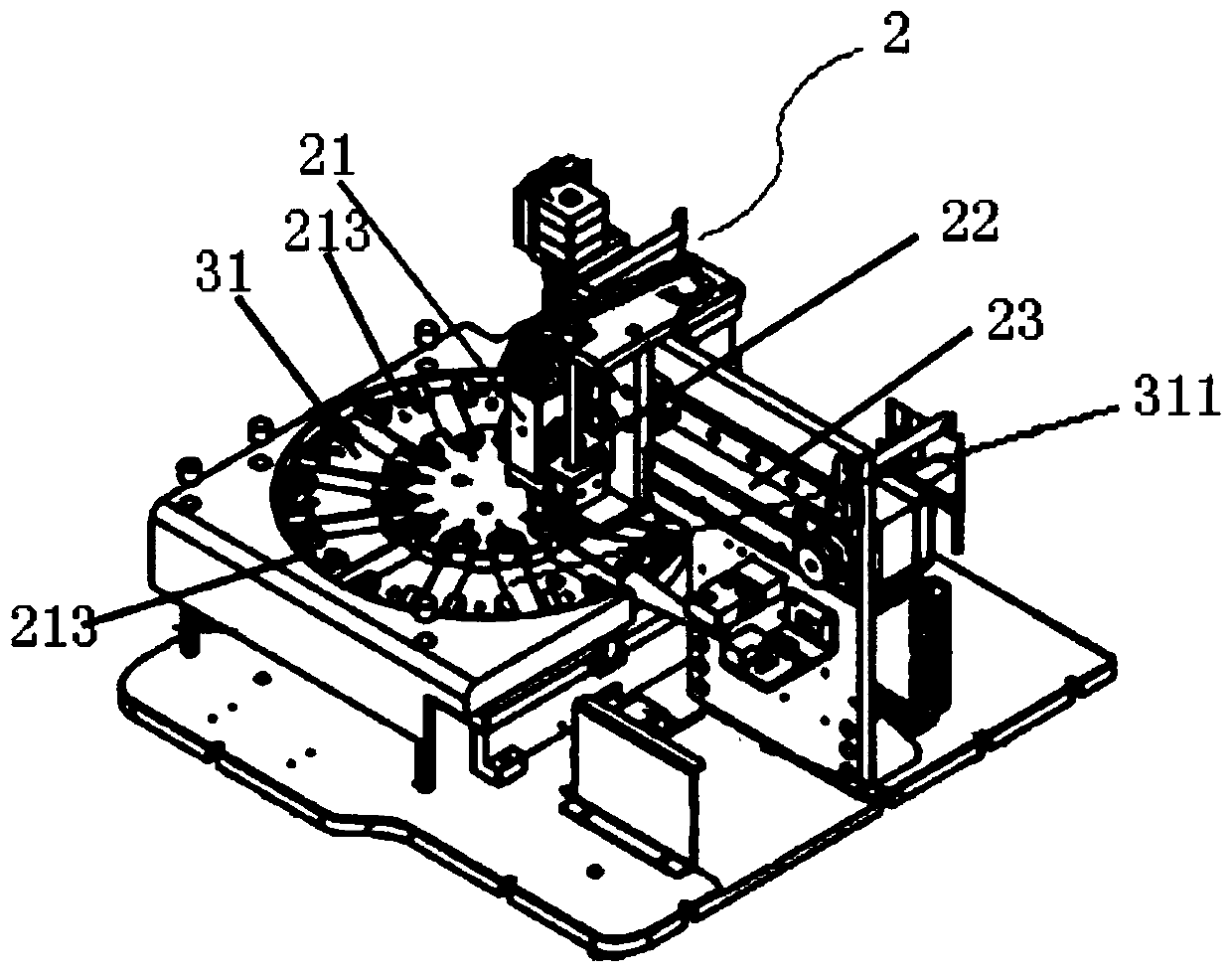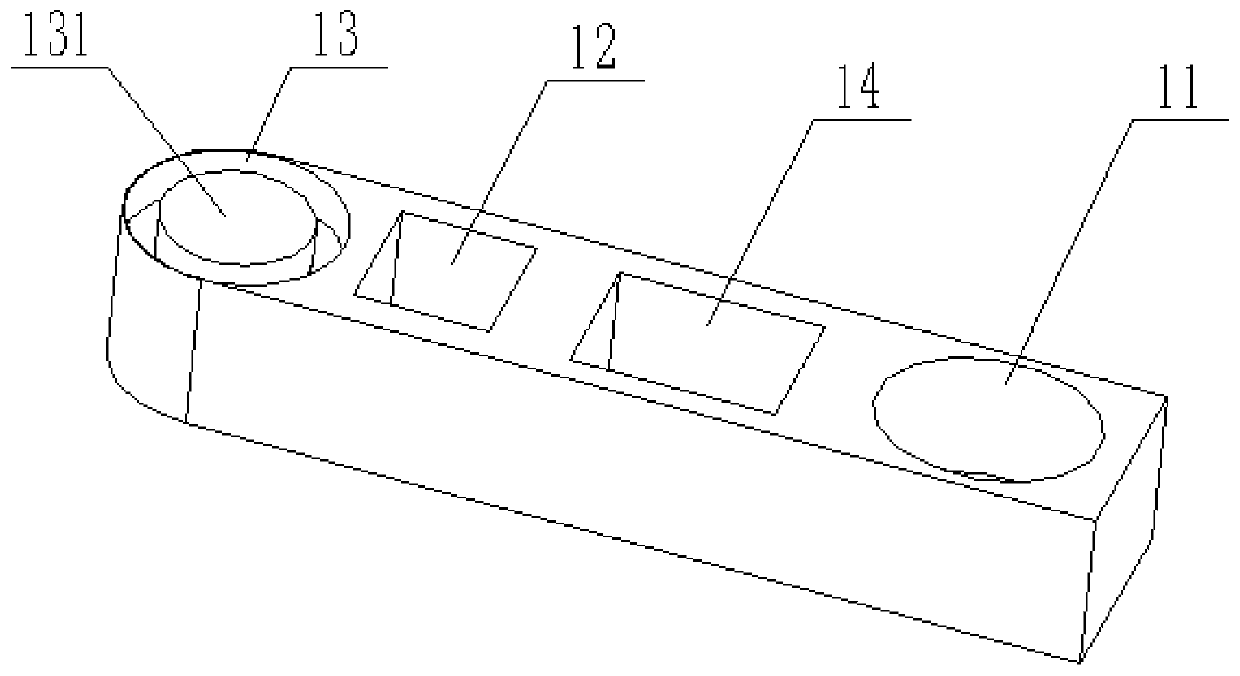Homogeneous chemiluminescence POCT detection method and device using same detection method
A homogeneous chemiluminescence, detection method technology, applied in chemiluminescence/bioluminescence, measurement device, analysis by chemical reaction of materials, etc., can solve the problems of low detection sensitivity, poor detection precision, insufficient reaction and so on , to achieve the effect of high sensitivity, improved accuracy, and reduced non-specific adsorption
- Summary
- Abstract
- Description
- Claims
- Application Information
AI Technical Summary
Problems solved by technology
Method used
Image
Examples
Embodiment 1
[0187] Example 1: Preparation of acceptor microspheres
[0188] 1. Prepare a 25mL round-bottomed flask, add 0.1g of europium(Ⅲ) complex, 10mL of 95% ethanol, stir magnetically, and raise the temperature of the water bath to 70°C to obtain a solution of europium(Ⅲ) complex.
[0189] 2. Prepare a 100mL three-neck flask, add 10mL 95% ethanol, 10mL water and 10mL polystyrene microspheres coated with carboxydextran hydrogel with a particle size of 200nm at a concentration of 10%, stir magnetically, and heat the water bath to 70 ℃.
[0190] 3. Slowly drop the europium(III) complex solution in step 1 into the three-necked flask in step 2, react at 70°C for 2 hours, stop stirring, and cool naturally to obtain an emulsion.
[0191] 4. Centrifuge the above emulsion for 1 hour at 30,000 g, discard the supernatant after centrifugation, and then resuspend with 50% ethanol. After repeated centrifugal washing for 3 times, it was resuspended with 50 mM CB buffer solution with a pH value of ...
Embodiment 2
[0193] Example 2: Receptor microspheres coated with antibodies
[0194] 1. Measure 10 mg of receptor microspheres coated with carboxydextran hydrogel in a centrifuge tube according to the prepared amount, and centrifuge at 10,000 rpm for 60 min.
[0195] 2. Discard the supernatant, add 2 mg of Anti-PCT antibody I to the precipitate (it can be the corresponding antibody embodiment of any other analysis item (anti-cTnI antibody I and anti-PCT antibody I)), 50 μL of Tween-20 ( 50mg / mL), and a certain volume of 0.05M MES pH=6.0 was added to make the final concentration of acceptor microspheres 10mg / mL.
[0196] 3. Ultrasonic rapid mixing.
[0197] 4. Add 50 μL of NaBH to the centrifuge tube 3 CN (50mg / mL, prepared in 0.05M MES pH=6.0) was mixed evenly, and placed in a rotary mixer at 37°C for 36-48h.
[0198] 5. Blocking: add 1 mL of BSA (50 mg / mL, prepared in 0.05M MES pH=6.0), and place in a rotary mixer at 37°C for 12-16 hours.
[0199] 6. Washing: wash 3 times with 0.05M M...
Embodiment 3
[0201] Example 3: Preparation of Donor Microspheres
[0202] 1. Prepare a 25mL round-bottomed flask, add 0.1g of copper phthalocyanine (II) and 10mL of DMF, stir magnetically, and raise the temperature of the water bath to 70°C to obtain a copper (II) phthalocyanine solution.
[0203] 2. Prepare a 100mL three-neck flask, add 10mL 95% ethanol, 10mL water and 10mL polystyrene microspheres coated with aldehyde dextran hydrogel with a particle size of 200nm at a concentration of 10%, stir magnetically, and heat the water bath to 70°C.
[0204] 3. Slowly drop the copper phthalocyanine (II) solution in step 1 into the three-necked flask in step 2, react at 70°C for 2 hours, stop stirring, and cool naturally to obtain an emulsion.
[0205] 4. Centrifuge the above emulsion for 1 hour at 30,000 g, discard the supernatant after centrifugation, and resuspend with 50% ethanol. After repeated centrifugal washing for 3 times, it was resuspended with 50 mM CB buffer solution with a pH valu...
PUM
| Property | Measurement | Unit |
|---|---|---|
| particle size | aaaaa | aaaaa |
| wavelength | aaaaa | aaaaa |
| particle diameter | aaaaa | aaaaa |
Abstract
Description
Claims
Application Information
 Login to View More
Login to View More - R&D
- Intellectual Property
- Life Sciences
- Materials
- Tech Scout
- Unparalleled Data Quality
- Higher Quality Content
- 60% Fewer Hallucinations
Browse by: Latest US Patents, China's latest patents, Technical Efficacy Thesaurus, Application Domain, Technology Topic, Popular Technical Reports.
© 2025 PatSnap. All rights reserved.Legal|Privacy policy|Modern Slavery Act Transparency Statement|Sitemap|About US| Contact US: help@patsnap.com



